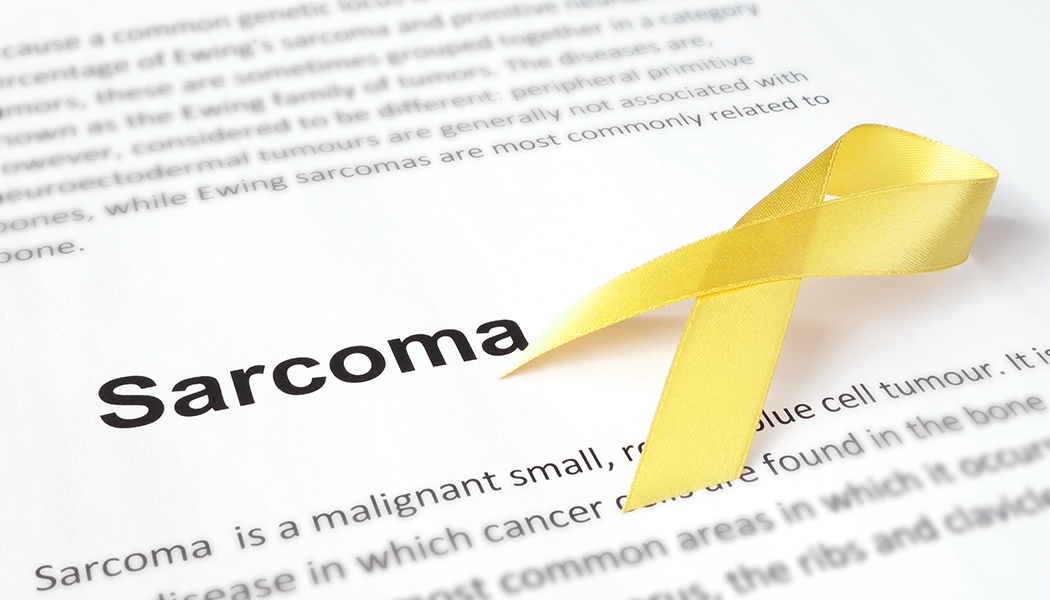Sarcoma: The Young Person’s Cancer?

Sarcoma is quite a rare diagnosis in adults. This specific type of cancer makes up less than 1% of adult cancer diagnoses. Surprisingly, it is relatively more common among children.
Most cancers have a name that paints an image. If someone has liver cancer, the mind quickly pictures the upper right region of the abdomen. When hearing of brain cancer, it’s easy to know that the tumor lies somewhere within the skull. Sarcoma, however, is a cancer that remains a mystery no matter how many times one may hear the name.
This particular type of cancer begins in connective tissues, such as bones, muscles, or fat cells. Connective tissues can be found throughout the human body, meaning it is possible for sarcoma to occur in any area of one’s body. What makes this cancer even more peculiar, however, is the age group in which it develops most frequently. Unlike most types of cancers, sarcoma is most commonly found in children and young adults. With the first of July marking the official start of National Sarcoma Awareness Month, there is no better time to unveil the mysteries of this unique disease.
Types of Sarcoma
Though there are many types of connective tissue that can be affected by sarcoma, there are two main types that encompass the majority of cancer cases. The first type is soft-tissue sarcoma, which starts in muscles, fat, blood vessels, or other tissues within the body. It is possible for soft-tissue sarcoma to occur in any body part, though it typically begins in the arms or the legs. Symptoms often include lumps, swelling, and bowel problems.
The second type is bone sarcoma. Bone sarcoma can begin in a variety of locations, including near the ends of leg and arm bones, pelvic bones, ribs, shoulder blades, or even the middle of a leg bone. Though bone sarcoma isn’t limited to one region, the symptoms are quite specific. People experiencing bone pain, especially if it worsens at night or with activity, should speak to their doctor immediately. Bone sarcoma can also result in swelling around the area of the bone affected.
Who’s at risk?
Age is the biggest single risk factor for cancer. In general, the risk of developing cancer greatly increases after the age of 50 and half of all cancers occur from the age 66 on. Sarcoma, however, is quite a rare diagnosis in adults. This specific type of cancer makes up less than 1% of adult cancer diagnoses. Surprisingly, it is relatively more common among children. Each year, between 1,500 and 1,700 children in the United States are diagnosed with bone or soft-tissue sarcoma, meaning sarcoma makes up about 15% of cancers in children under the age of 20.
NFCR supported researcher Dr. Cesare Spadoni is leading a team to develop treatments for rhabdomyosarcoma, the most common pediatric soft tissue sarcoma. Spadoni’s team is using the small molecule drug, Volasertib. With support from the NFCR AIM-HI Translational Research Initiative, Volasertib has advanced in pre-clinical research toward clinical trials. A Phase I clinical trial will begin in 2020.
A common misconception of cancer in young adults is that a young body is better equipped to ward off diseases and recover from treatment. Unfortunately, young adults are at a disadvantage in regards to cancer treatment. Sarcoma-related research has focused heavily on children and older adults with few studies looking at the impacts in young adults. This means that while risk factors, symptoms, and best treatment options are assumed to be the same across age groups this theory hasn’t necessarily been proven.
Thankfully, as researchers and medical teams gain a better understanding of the genetics and biology of cancer, they are now relying on more innovative therapeutic strategies. NFCR-fellow Dr. Wei Zhang is one of the researchers dedicated to the pursuit of precision oncology – specifically, he focuses on the key molecular and genomic events that drive the development and progression of cancer. Dr. Zhang has identified several novel cancer markers that can be used in new diagnostic tools to improve management of sarcoma and greatly increase patient survival rates.
The National Foundation for Cancer Research is proud to support Dr. Zhang, Dr. Spadoni and other researchers committed to high-risk/high-reward studies. To learn more about the projects NFCR supports please visit the NFCR website. To help fund live-saving research, please donate here.
Additional Reads You May Enjoy:
Rhabdomyosarcoma: The Muscle Cancer That Isn’t
Sarcoma Awareness Month: Bringing Light to “the Forgotten Cancer”
Stay connected with us! Receive our monthly e-newsletter and blogs featuring stories of inspiration, support resources, cancer prevention tips and more. Sign up below:











